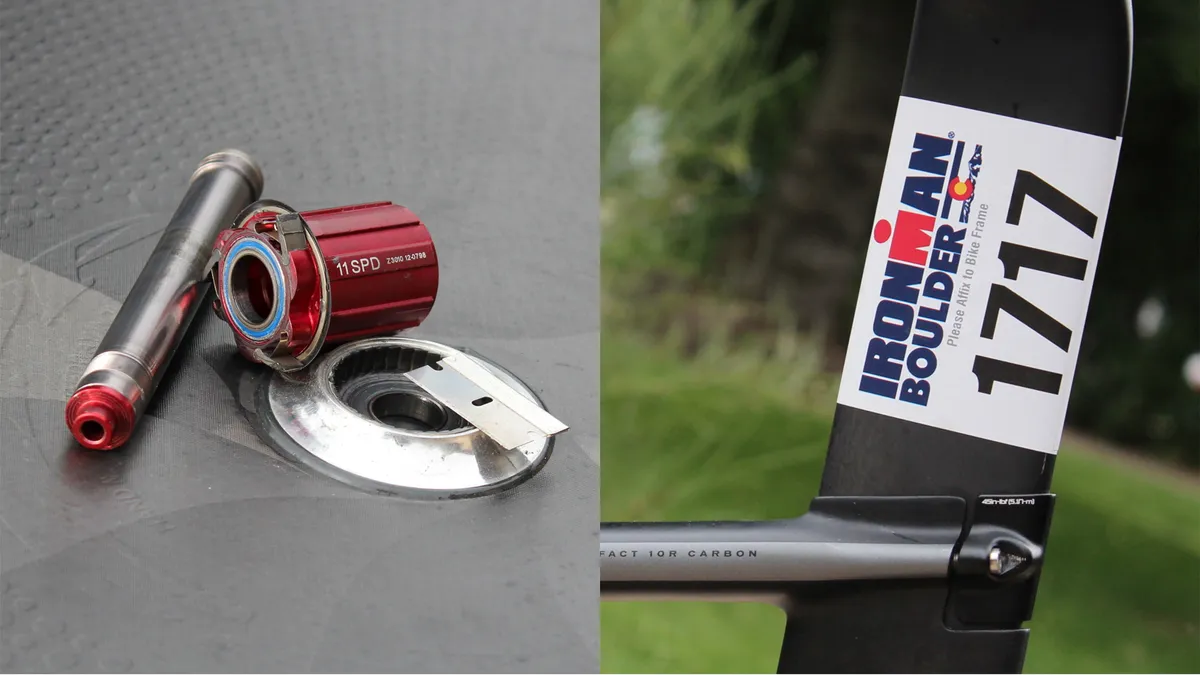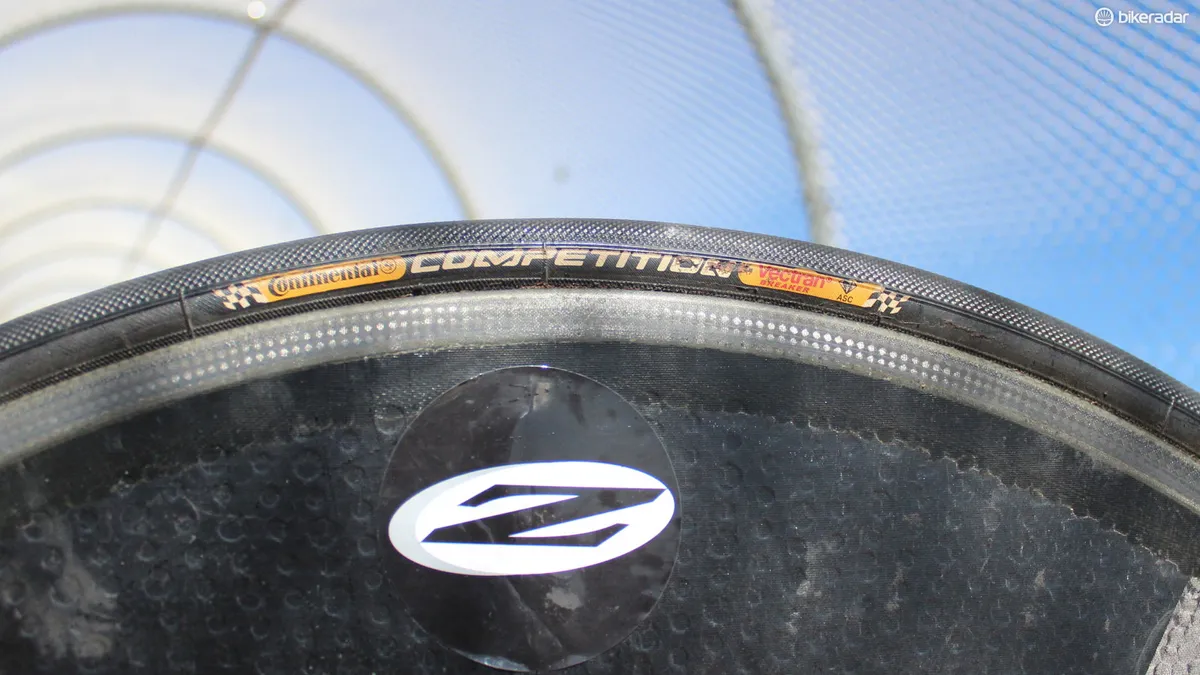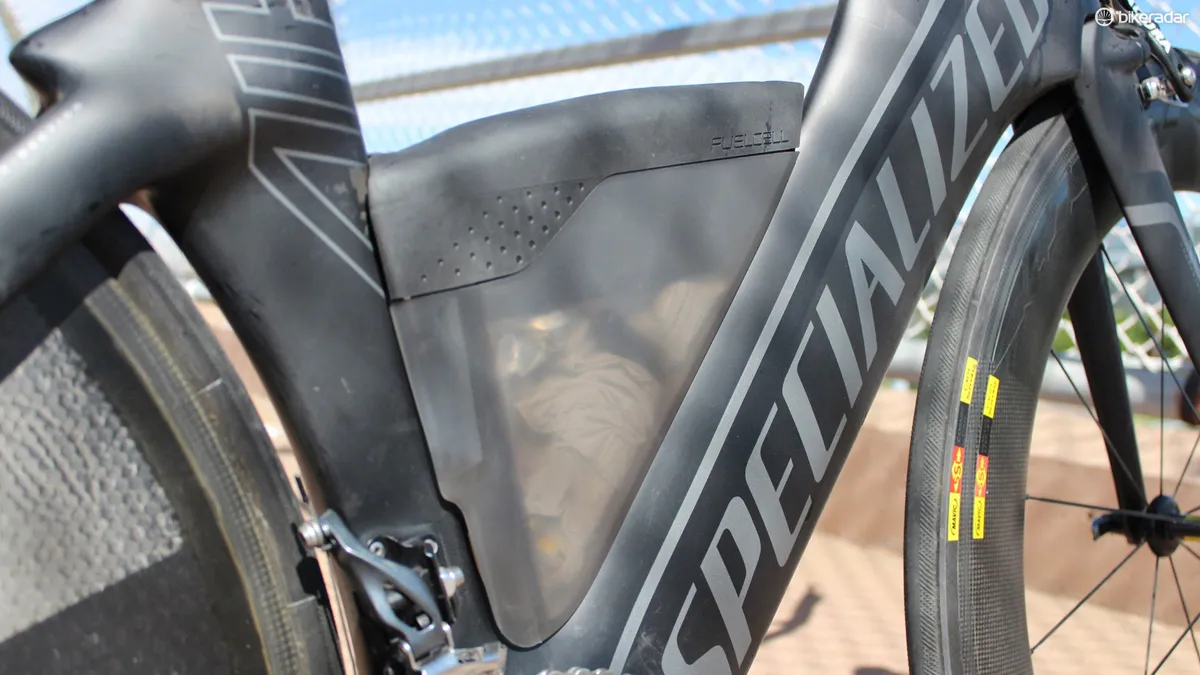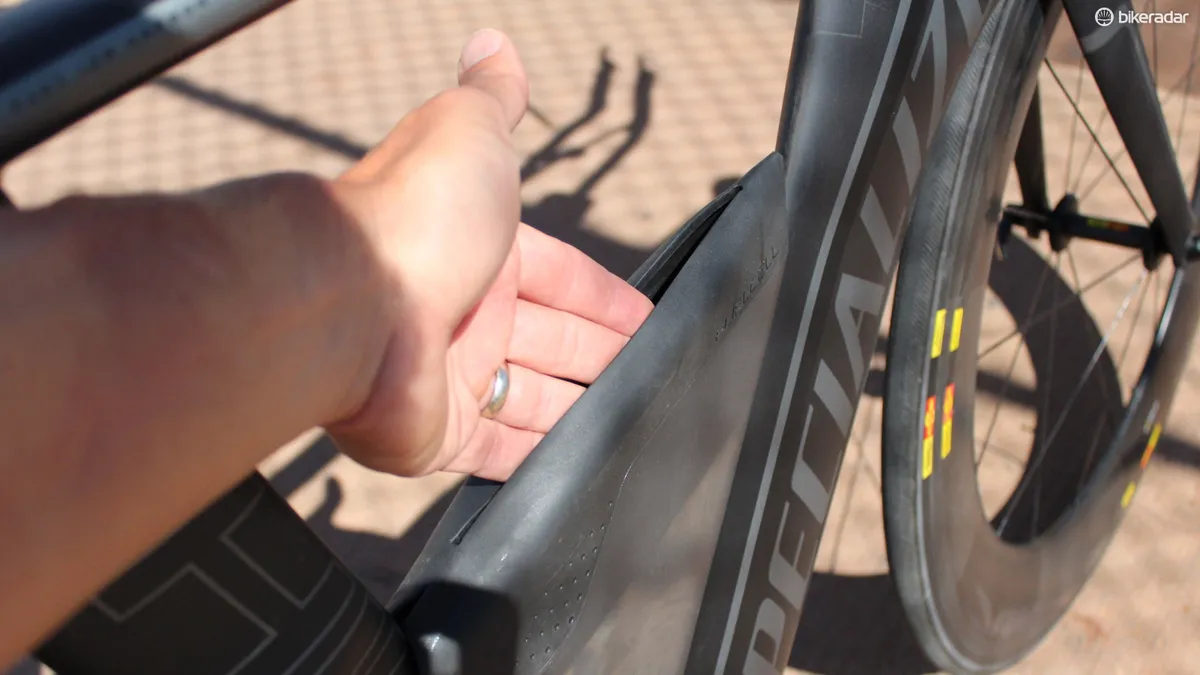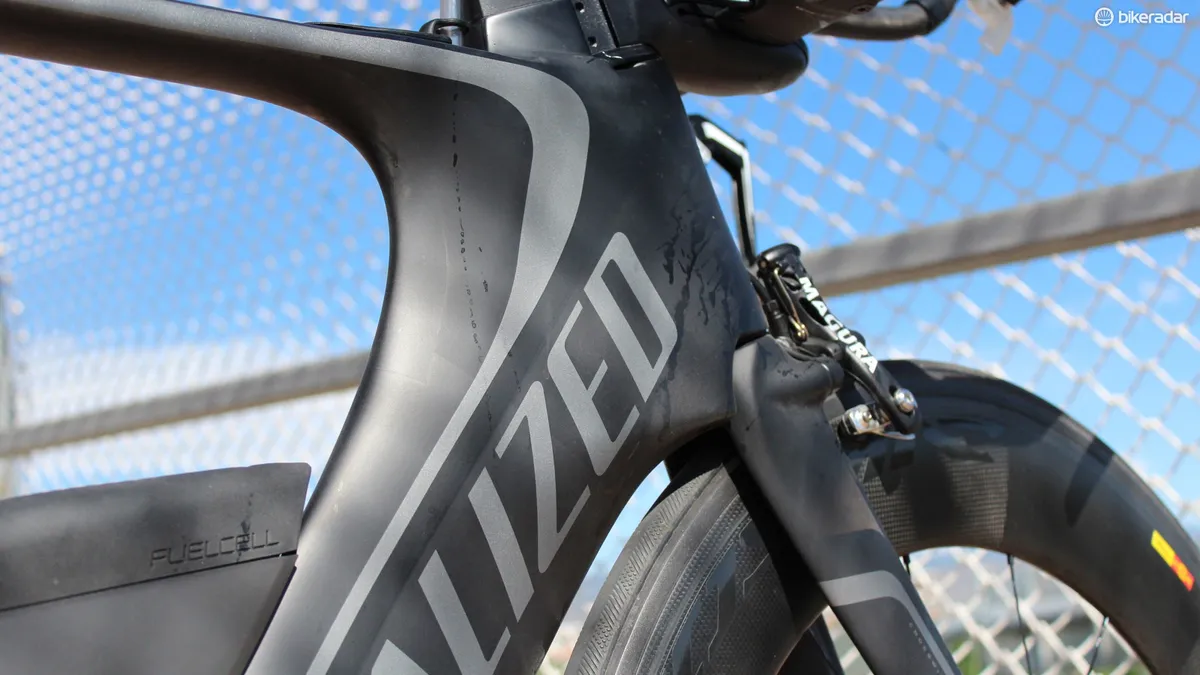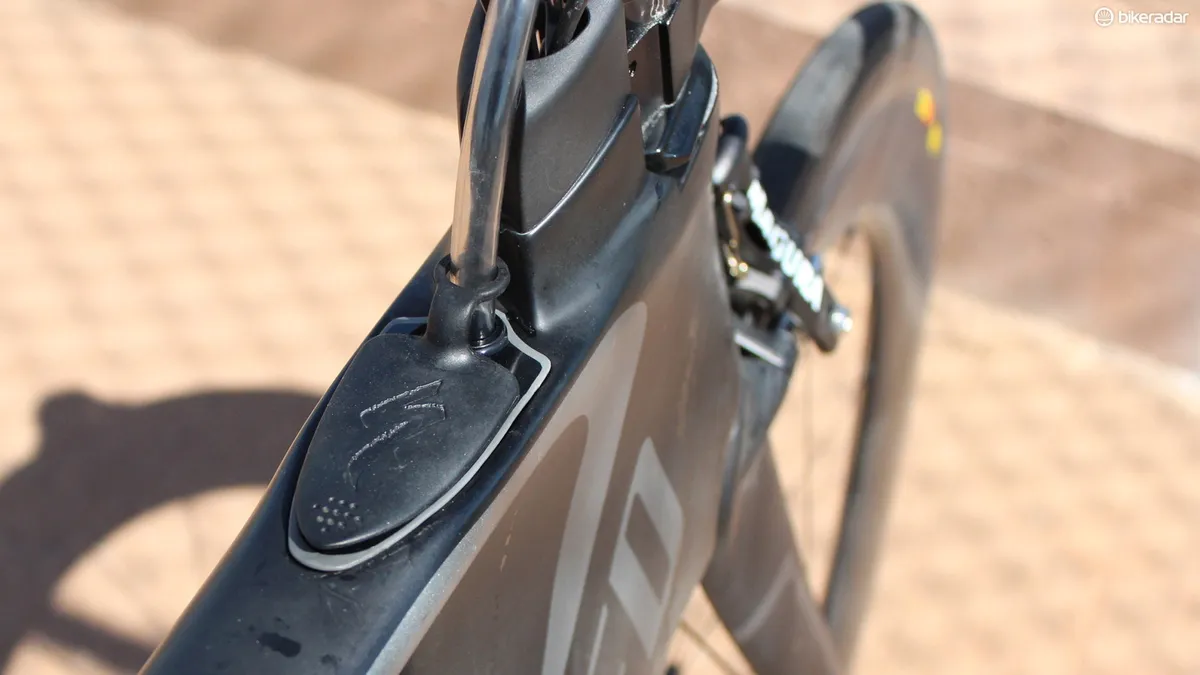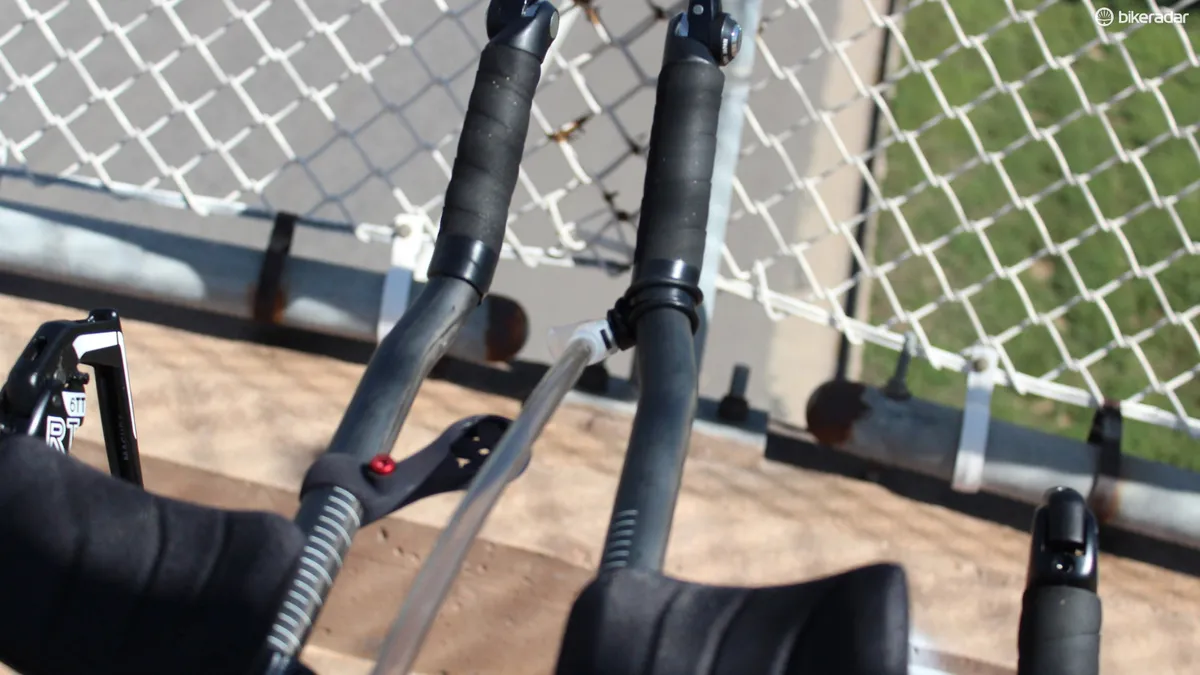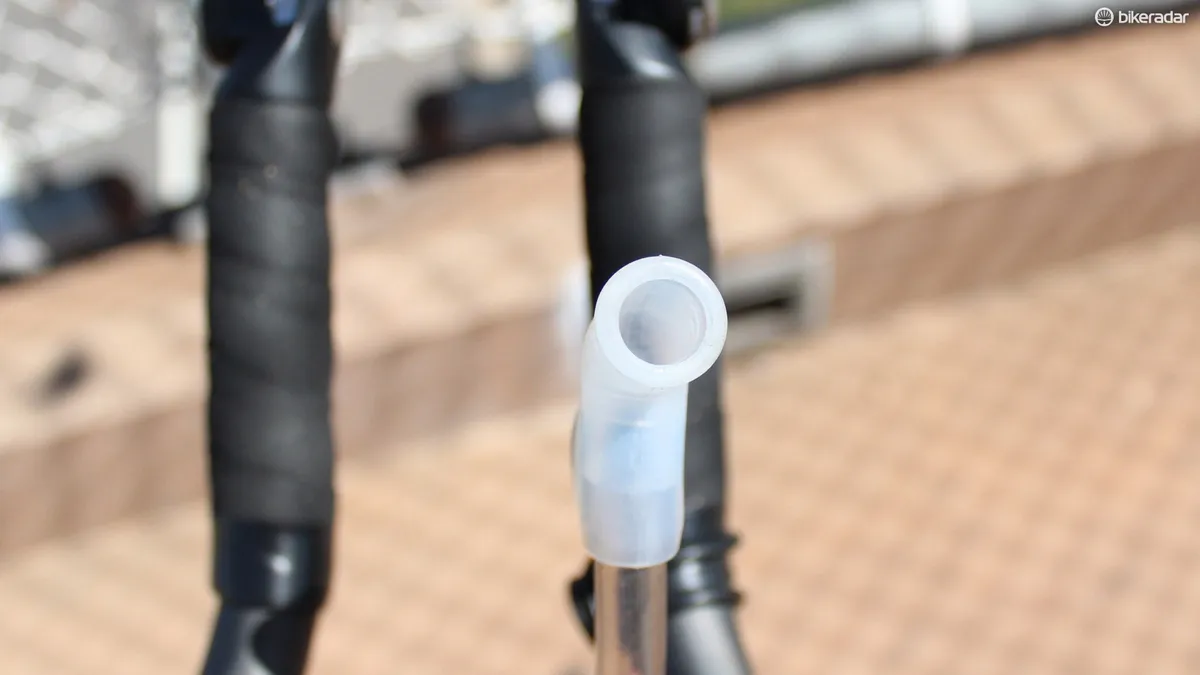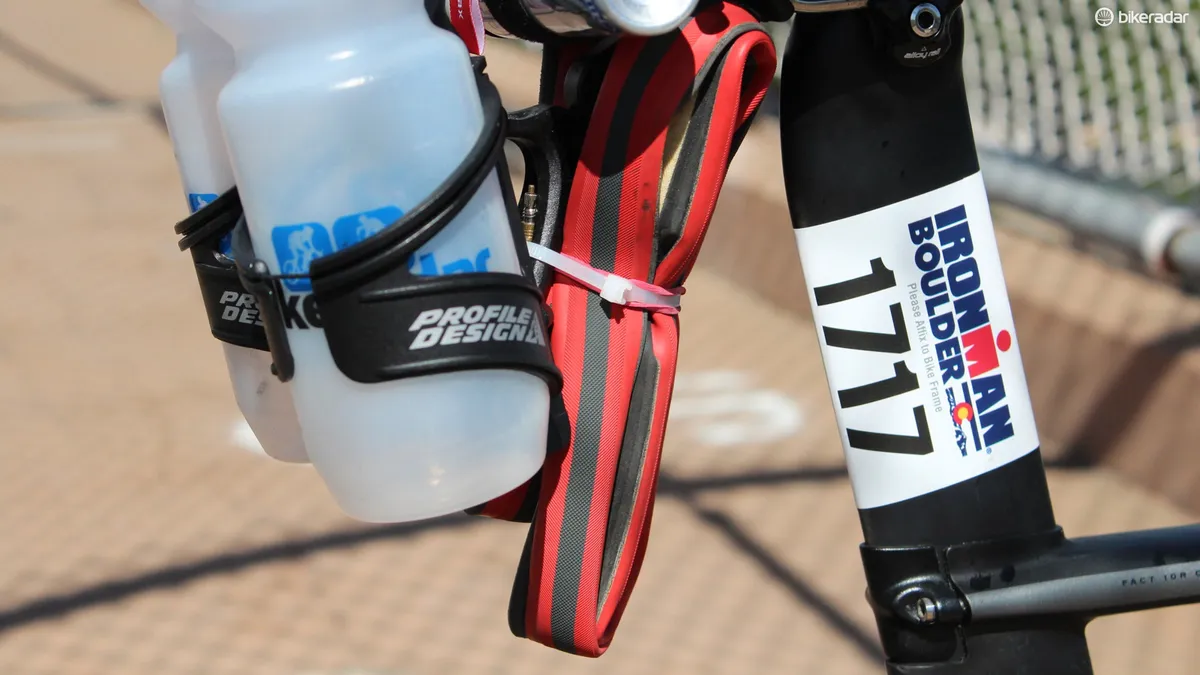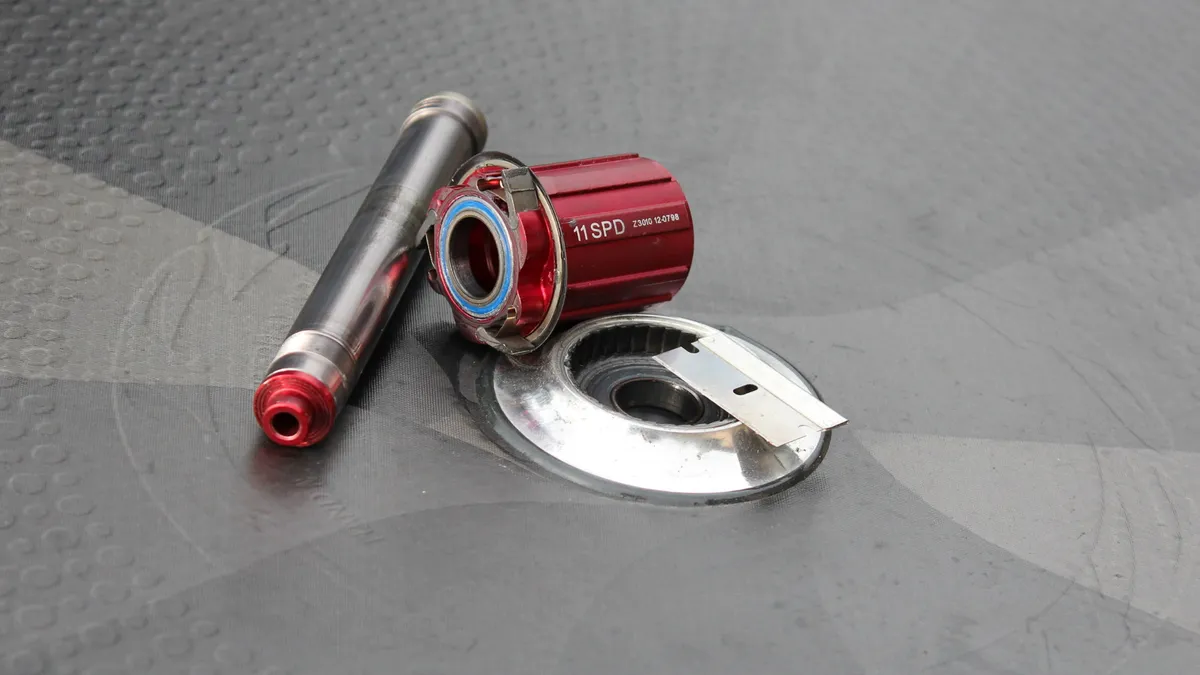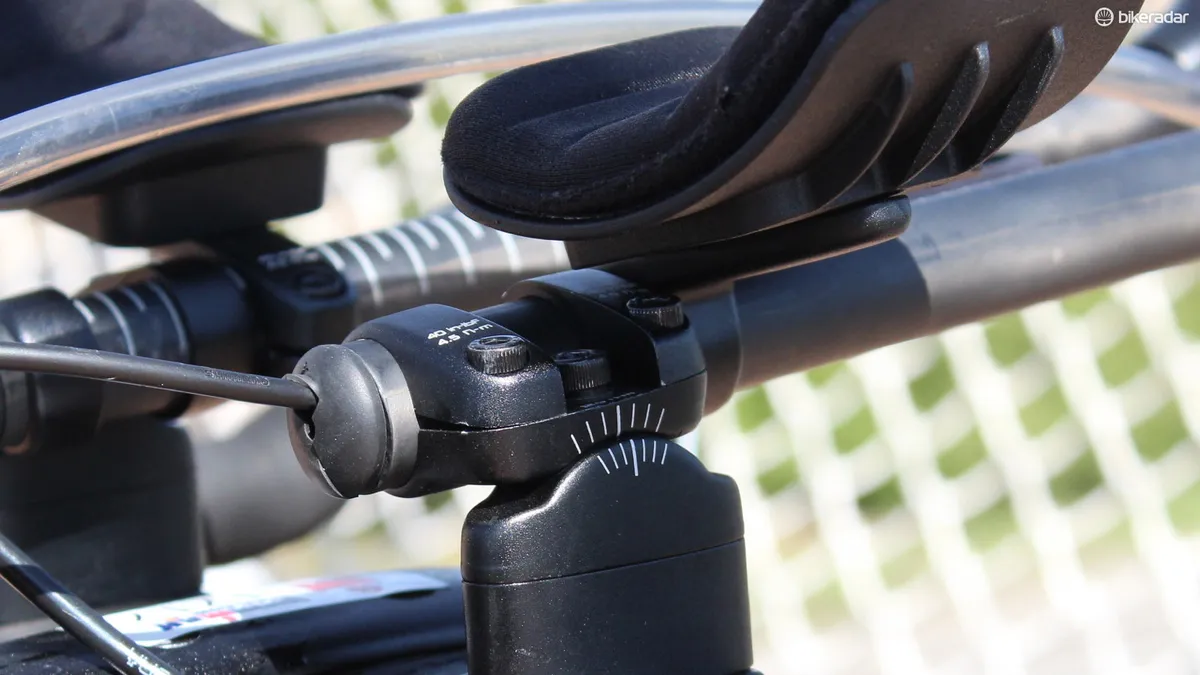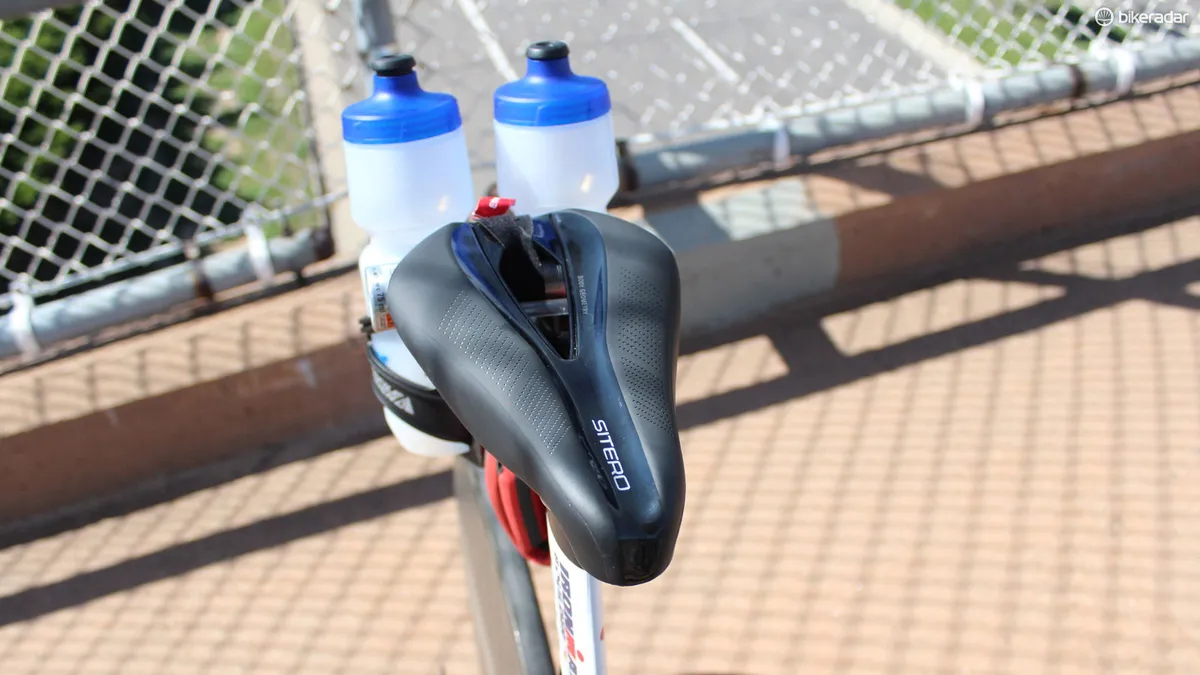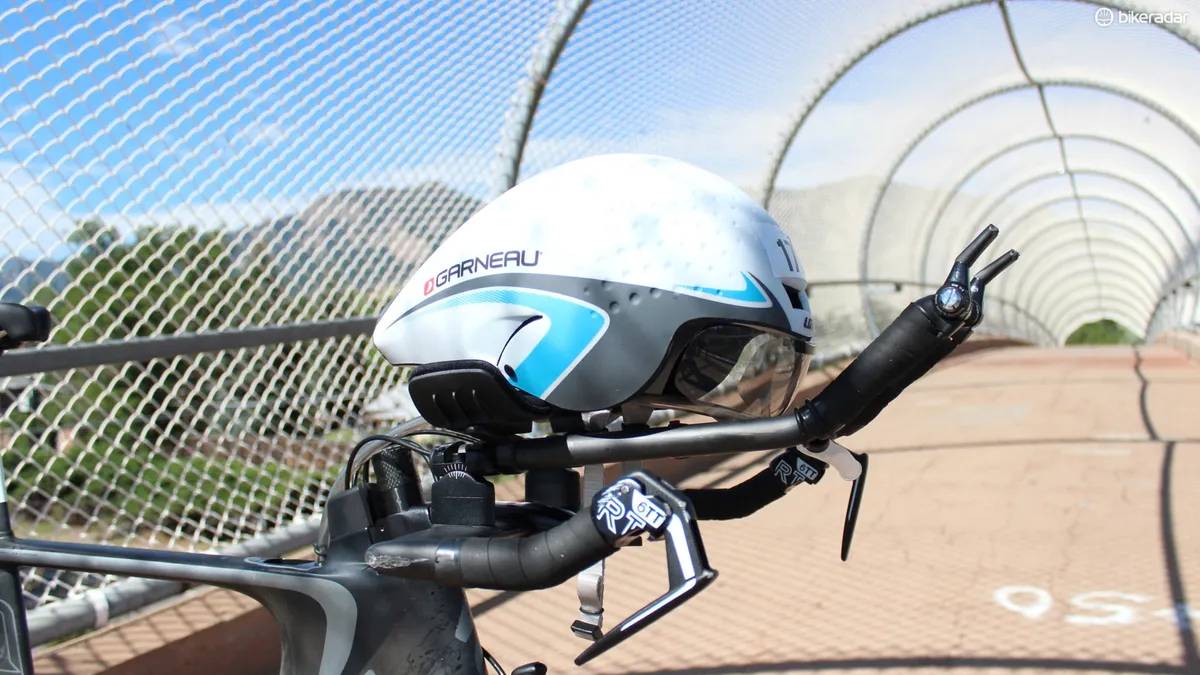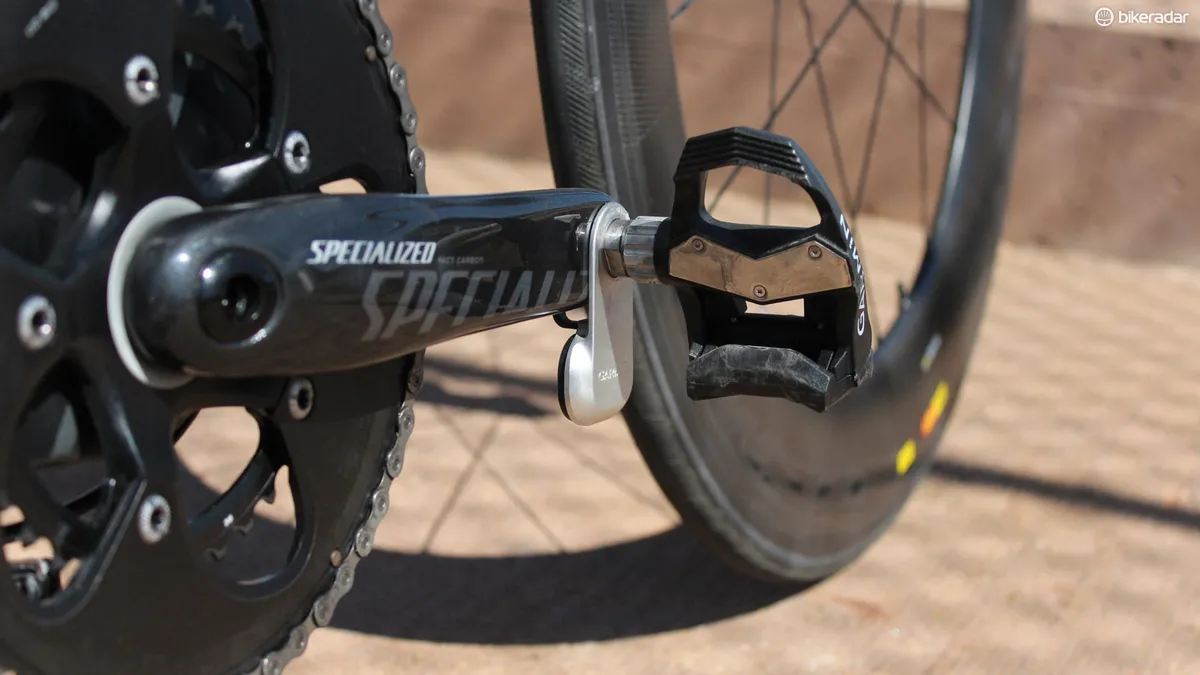As a longtime cyclist but first-time long-course triathlete, I wanted a fast bike to tackle the Ironman Boulder that would be comfortable enough for the five-hour bike leg to leave something in the tank to run at the end of the day. I selected a Specialized Shiv Pro Race and made a few modifications, including tucking a razor blade in the Fuelcell storage compartment, just in case. (The original plan was a Boardman AiR TT tester, but production schedules didn’t allow it.)
The final assembly was good enough for a 4:44 bike split (24mph) at a governed effort of 133bpm (or 161w average, if the Garmin Vectors are to be believed).
Riding more or less alone in the wind for about five hours, aerodynamics is obviously a huge factor. But, despite the Specialized hashtag, it’s not everything. Comfort and efficiency are also vital, so a proper fit is the most important component of the whole operation.
- The course: 112mi flat to rolling bike leg with 4,000ft elevation gain — unfortunately sandwiched between a 2.4mi swim and a 26.2mi run
- The equipment goal: The fastest set-up possible with enough comfort to stay aero for 5 hours and be able to run afterward
- The horse: A Specialized Shiv Pro Race with a Zipp 900 Disc and Mavic CXR 80 front wheel
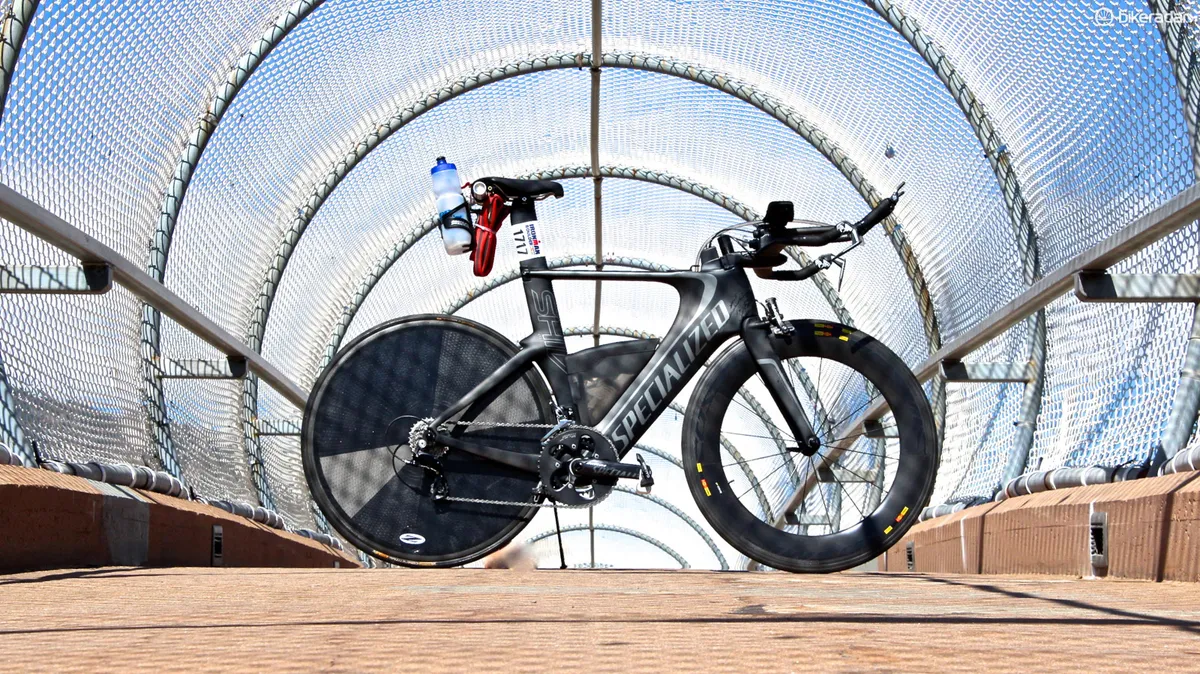
Two years ago when I first started flirting with the triathlon thing, I went to see my buddy Ivan O’Gorman, a professional fitter at Retül. O’Gorman has done fits for the likes of Team Sky and many pro triathletes, and the first thing he did once I had my bike on the stand was to tip his head back and laugh at me.
As a roadie, my time-trial position had always consisted of slamming the front end as low as possible, but leaving the saddle relatively the same as my road bike position. O’Gorman elevated and extended the front end, then brought my saddle way up ( 2cm) and way forward ( 5cm). The basic idea was to rotate my position forward around the bottom bracket, keeping the angle between the torso and the thighs as open as possible. I’ve used this position ever since.
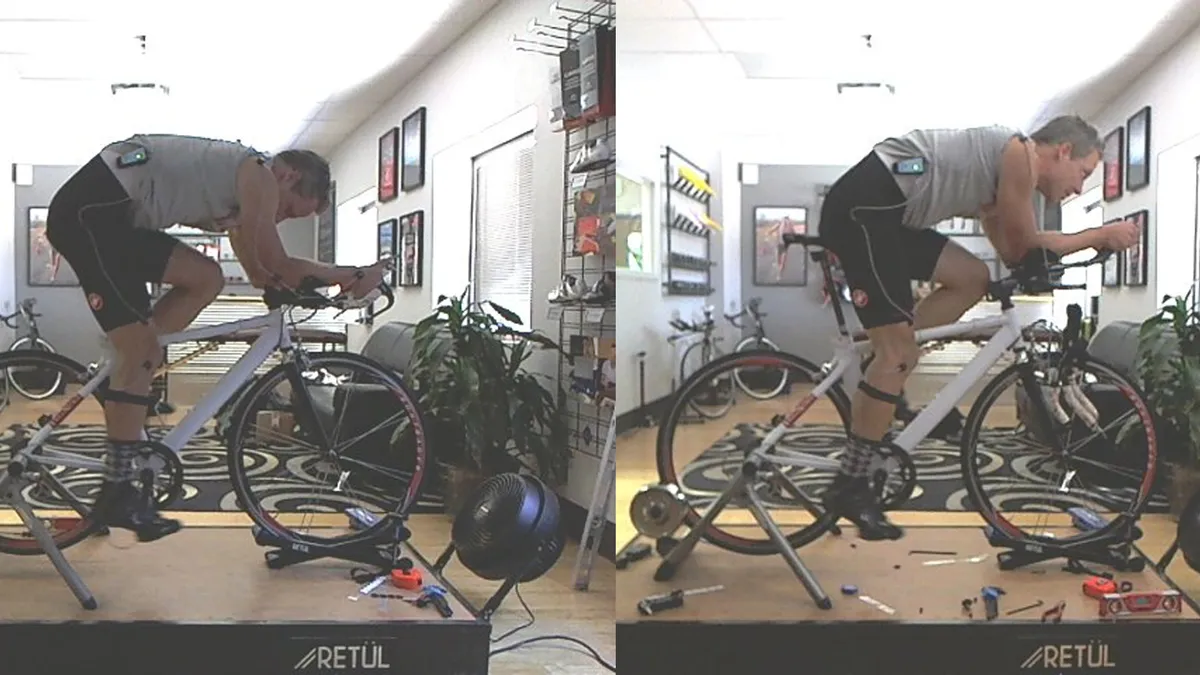
Before, at left, and after some professional assistance from Retül's Ivan O'Gorman
The Specialized Shiv Pro was relatively easy to adjust to this position, with cockpit stack height adjustable at the stem with spacers, and at the pads with a modular system of metal risers. Cockpit length has a few adjustments: the base bar has two possible positions within the stem, the extensions slide in and out, and the arm rests can be set basically anywhere on the extensions. Cockpit width adjustments were restricted to a set of four slots (with a little wiggle room in each) in the arm rests, but that was plenty.
O’Gorman set me up in 2012 with an ISM saddle, which allowed us to get the position forward enough on a converted road bike. I’ve since experimented with a few saddles and found the Specialized Sitero to offer long-ride comfort even when the hips are rolled forward. A Sitero came on the Shiv.
Gear modifications
The Specialized Shiv Pro comes with Roval Rapide CLX 60 carbon clinchers, which are high-end race wheels in their own right. Bike companies are split on what type of wheels to spec on TT/Tri bikes; some go with race wheels like this, but many go with ‘training wheels’ to keep the price down, reasoning that racers will inevitably pick something different.
I suppose I’m a case in point for that latter category. I called my buddies for the deepest, fastest wheels they had in their garages. An 80mm Mavic CXR 80 tubular complete with the ‘blade’ snap-in rim strip that smoothes the air from tubular sidewall to wheel went on the front, and an older Zipp 900 Disc with a Continental Competition tubular went on the rear. Swapping out the 10-speed freehub body for the 11-speed one I needed was a five-minute job.
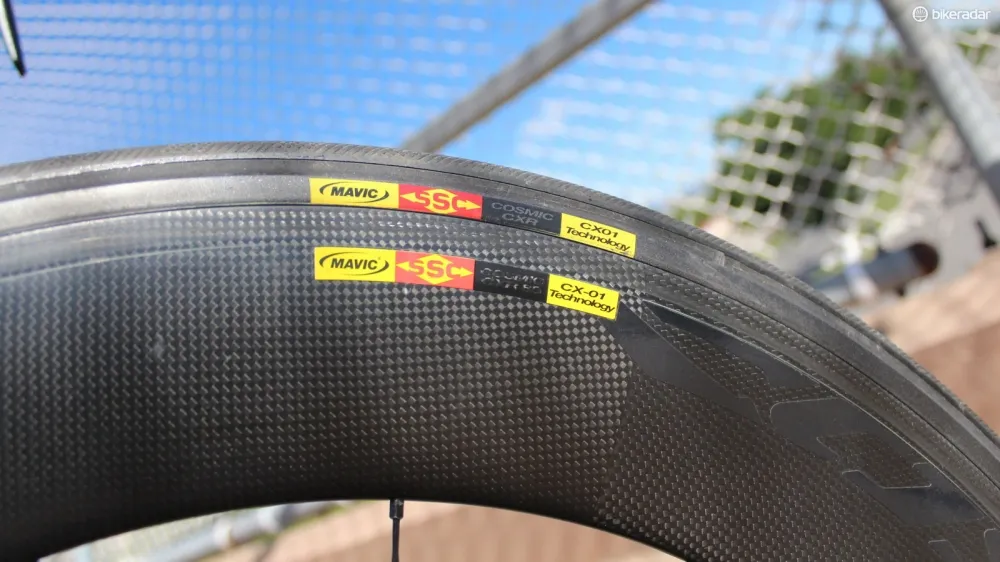
Mavic's 'Blade' snaps into the little channel between tubular and wheel
Being an Ironman newbie (and also having learned the hard way the prior weekend about a race-ending rubber situation), I packed all manner of back-ups. Plan B was a Hutchinson Fast'Air canister to inflate and seal a small puncture. Plan C was a spare tubular zip-tied onto the rear bottle cages with CO2 canisters and an inflator head in the Fuelcell storage compartment. Oh, and that razor blade? That was my friend and former pro mechanic Zack Vestal’s recommendation for quickly changing a tubular flat — slice the old one in half and rip it off, instead of trying to roll it off, battling with the glue.
For power measurement, I went with Garmin Vector pedals, although I metered my effort with heart rate via a Garmin Edge 810 and used the power as a secondary metric.
Having done a few triathlons and come away somewhat fearful of how poorly most triathletes execute bottle hand-ups through feed zones, I planned to be as self-sufficient as possible. A Profile Design RM1 saddle-mount dual bottle cage paired with the Shiv’s internal 22oz bladder meant I only had to stop once. Ironman triathlons, I learned, offer ‘special needs bags’, which you can fill with whatever you want to be picked up about halfway through the course. I put in three bottles of Skratch Labs drink mix, a Starbucks Doubleshot, a little can of Coca-Cola, two Honey Stinger waffles, and two homemade rice cakes. I only stopped there to reload, and sailed through all the other feed zones, head down.
Finally, I used Louis Garneau’s engulfing P-09 helmet, with integrated visor, ear flaps and removable vent plug.

Magura's RT6TT hydraulic levers are well executed, with contact adjustment via an Allen bolt (at center), and a simple but effective quick release mechanism that flips the lever forward and the brake caliper open (at left). I popped the rear open during the race when I thought I heard — but couldn't see — the rear brake rubbing
The results
Having done a number of rides on the bike, I knew the position was comfortable and sustainable. During the race I made every effort to keep my head low throughout the day. The Sitero saddle didn’t let me down; even with the dinky little chamois on tri shorts, the five-hour ride was comfortable in the aero position without any numbness.
The Shiv’s internal bladder is a pain during training and for maintenance. Unlike a bottle you can slide in and out of both the cage and a dishwasher, the bladder takes some doing to get into the frame, and then has to be washed by hand. The hose's bite valve requires some training, too. If you don’t pause with the straw up after taking a sip, the fluid in the straw will spill out as you re-secure it, splattering all over the front of the bike. All that said, for racing, it’s an excellent solution. I passed many riders sitting up to drink on downhills, as I stayed low, relaxed and drank through the straw in the same low aero position. After the bladder emptied, I’d refill it with a bottle from the Profile cage. Having the port behind the stem sheltered the liquid from the wind, so refilling on the fly was no problem.
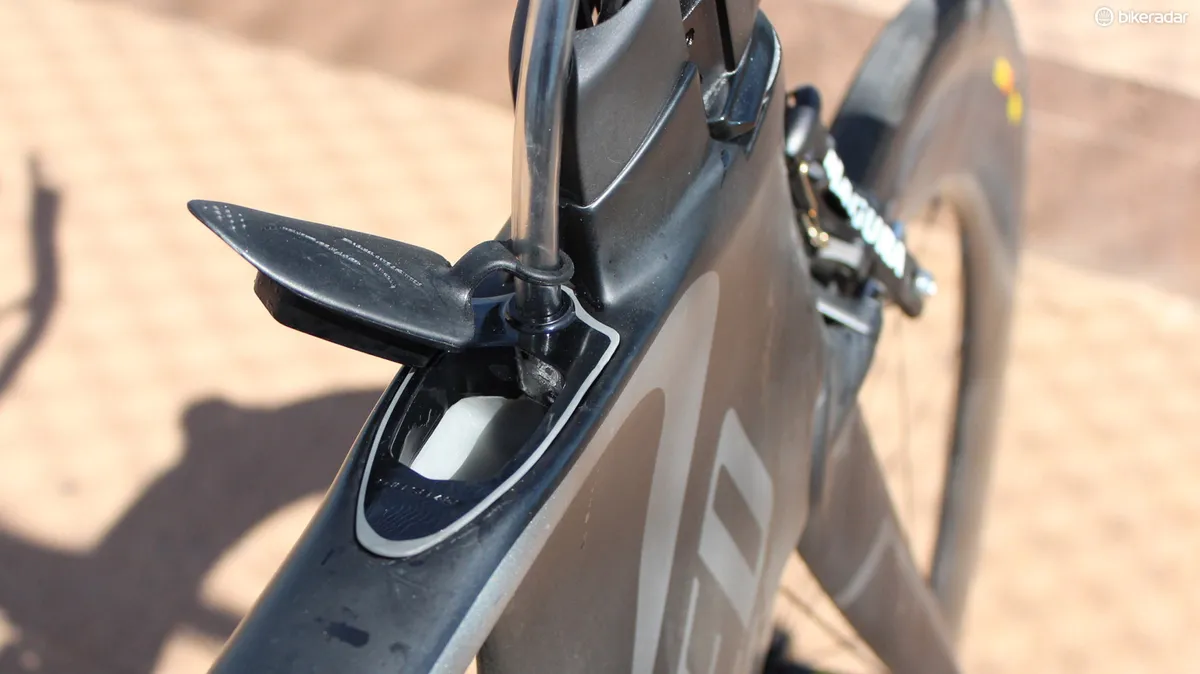
Refilling the bladder on the fly from the rear-mounted bottles was easy, and allowed me to bypass all but one of the aid stations
The deep wheels combined with the Shiv’s huge side profile made for a glorious sail of a bike. With only mild winds on the day, I was delighted with the depth. On the few downhills when I ran out of gear, I simply tucked — and still kept passing people. The CXR 80 never gave me a second’s nervousness, even with big trucks occasionally billowing by at speed.
I was grateful to not flat, and the tubulars — the Competition especially — felt like butter, even at 120psi. Were I to buy a disc, I’d probably go with a clincher; carrying a tube, a canister, and inflator head is a lighter, faster, cheaper fix than a spare tubular and supplies.
Speaking of carrying supplies, the two-piece Fuelcell storage unit is great in concept and mostly good in execution. Annoyingly, I wasn’t able to fit much more than a spare tube in the lower part for training. For racing, I stored two cartridges, an inflator head, and a gel down low. The upper rubber part worked well for slender things like Honey Stinger waffles and gels, but I had to stick my rice cakes in my jersey pockets.
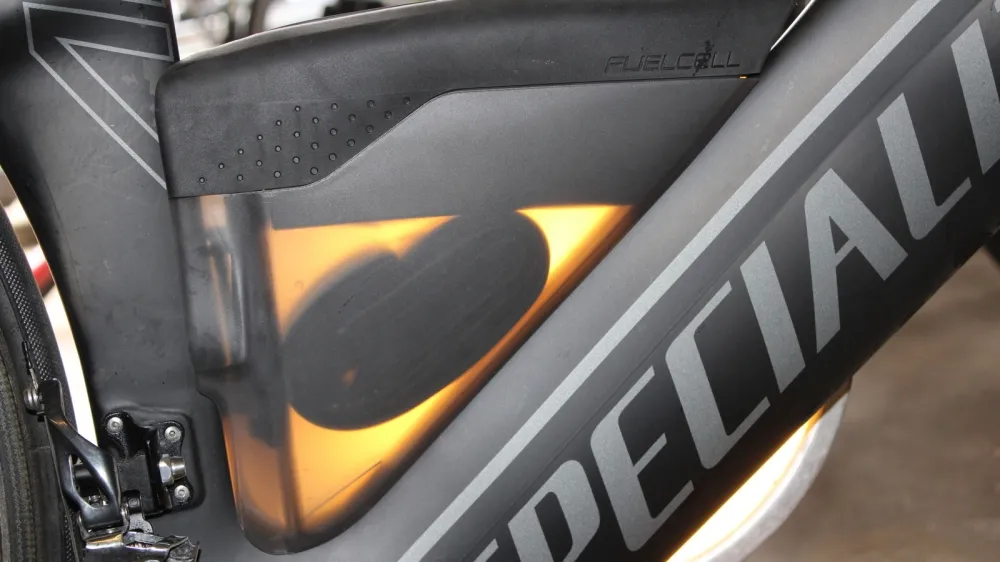
The lower half of the Fuelcell is great in concept, but you can't fit all that much in there in practice. For the race, I put two cartridges, an inflator head, a razor blade, and a gel in there. Here I backlit the Fuelcell with a standard inner tube for a visual demonstration
The Louis Garneau P-09 helmet worked very well. The ear flaps pull open and the visor pivots for easy access. I appreciate the integrated visor over sunglasses as much for the unobstructed upper field of vision as the improved aerodynamics. The vent plug works well; early in the day I kept it in. As the day warmed up I pulled it out and pocketed it. A better solution would be an integrated storage compartment for it, such as a slot underneath the tail where it could pop in. Similarly, being able to stow the removed visor somewhere, like with the new Bontrager magnetic visor, would be an added benefit. I did not need it on the day, but on a roasting hot day the extra ventilation could be key.
All in all, I was happy with this horse. Being a horrible swimmer, I started the bike in about 1,400th place of 2,800. I galloped my way up to 54th on the Shiv with the CXR 80 and Zipp disc, and did so keeping my heart rate relatively low. Granted, some of that is technique – I’m comfortable cornering fast, tucking on hills, and so on – you know, being a cyclist. But a speedy, comfortable bike like the Specialized Shiv Pro Race goes a long way… especially on a long day.
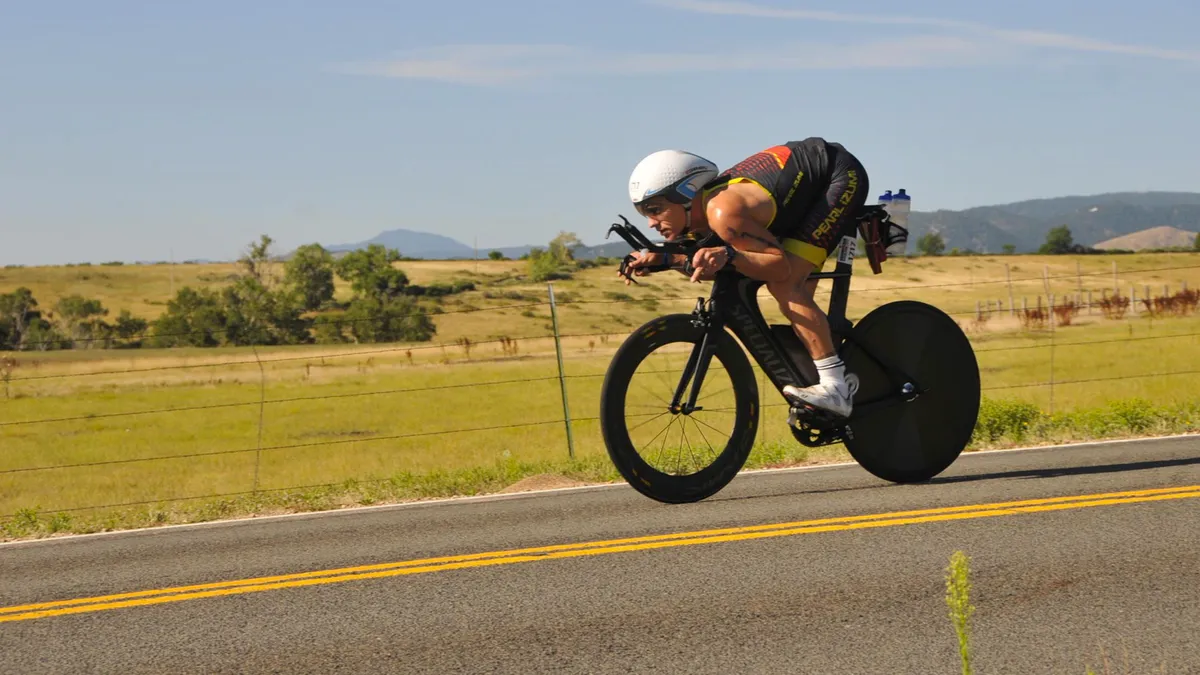
On three or four downhill spots on the course, I ran out of gear with the 52/11, but tucking and coasting was a welcome relief - and still plenty fast
